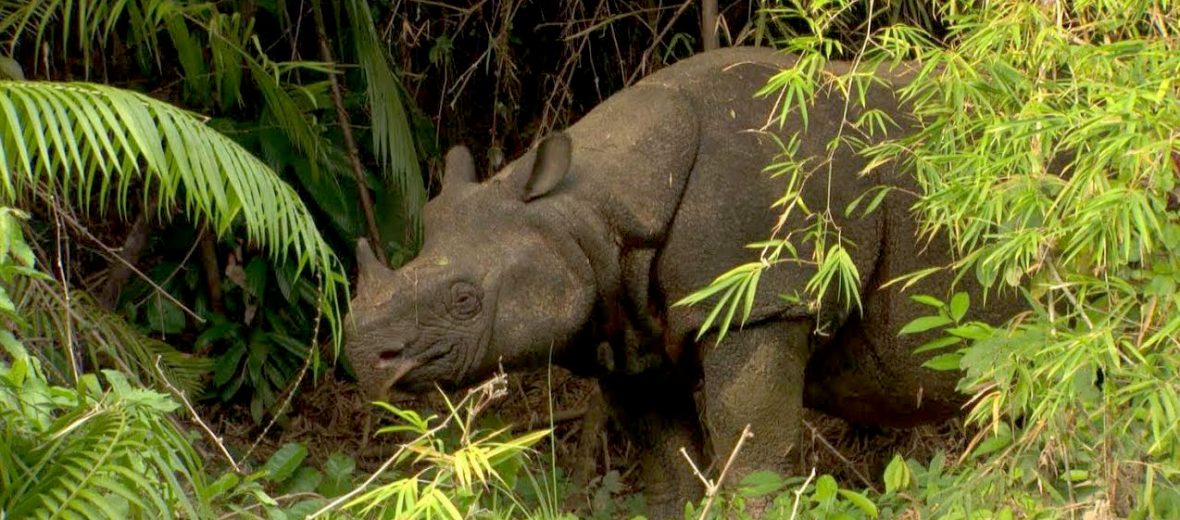
The Javan rhinoceros, aka Javan rhino, lesser one-horned rhinoceros, or Sunda rhinoceros, are perhaps the rarest large land mammal on earth. They can only be found on the island of Indonesia. None exist in captivity. They prefer grasslands, dense, lowland rainforests, and reed beds packed with rivers, large floodplains, or saturated areas with numerous mud wallows. Due to habitat destruction at the hands of agriculture and logging; hunting (for their horn – which is used in traditional Chinese medicine, which has been proven not to work towards curing anything); and trapping, these creatures are listed as Critically Endangered by the IUCN. They number only 18 wild individuals, as of 2019.
First the Stats…
Scientific name: Rhinoceros sondaicus
Weight: Up to 2.3 tons
Length: Up to 13.1 feet
Height: Up to 5.6 feet, at the shoulders
Lifespan: Up to 45 years
Now on to the Facts!
1.) These rhinos were once the most widespread of the Asian rhinoceroses.
2.) Only males have a single horn, while females may develop a small bump on their nose.
3.) Their horn is not typically used for fighting, but rather to tear down plants for consumption, for scraping mud away in wallows, and for opening paths through the thick forest vegetation.
4.) The Javan rhino’s upper lip is long, pointed, and used to tear leaves from branches.
5.) Their lower incisors are sharp and long. They are typically used for fighting other males.
But wait, there’s more on the Javan rhinoceros!
6.) Like all rhinoceroses, their senses of smell and hearing are acute, however, their vision is poor.
7.) A group of rhinos is called a stubbornness or crash.
Did you know…?
Oxpeckers are often seen on the backs of these rhinos, picking away at parasites. These birds not only help remove parasites but also warn of impending danger, as humans approaching are met with a loud call by the birds.
8.) These rhinos are typically solitary, sans breeding pairs and cows with their young. That being said, they will sometime conglomerate into groups at wallows and salt-licks.
9.) Various leaves, young shoots, twigs, and fallen fruit are all on the menu.
10.) It is presumed, with the little information available, that these rhinos are polygynous (1 male mates with multiple females).
But wait, there’s still more on the Javan rhinoceros!
11.) Females undergo up to a 16 month gestation (pregnancy) that yields a single calf.
12.) Weaning is usually complete after up to 2 years.
13.) These rhinos need to drink water every day, so they stay in close proximity to water sources.
14.) In an effort to conserve these magnificent beasts, some groups have intentionally removed their horns, safely, to help deter their slaughter.
Now a Short Javan Rhinoceros Video!
Be sure to share & comment below! Also, check out the Critter Science YouTube channel. Videos added regularly!
Want to suggest a critter for me to write about? Let me know here.
Some source material acquired from: Wikipedia & IUCN



